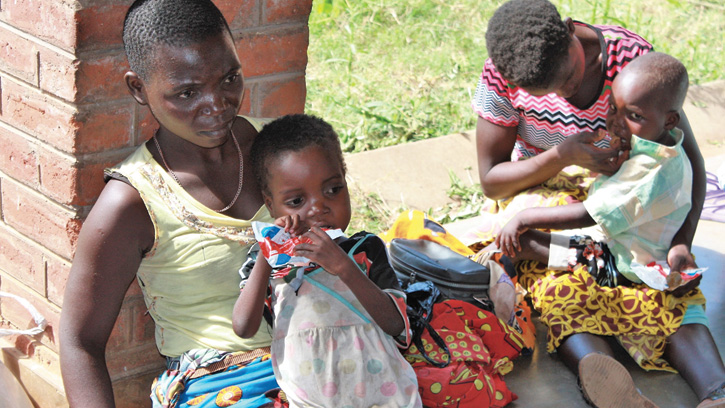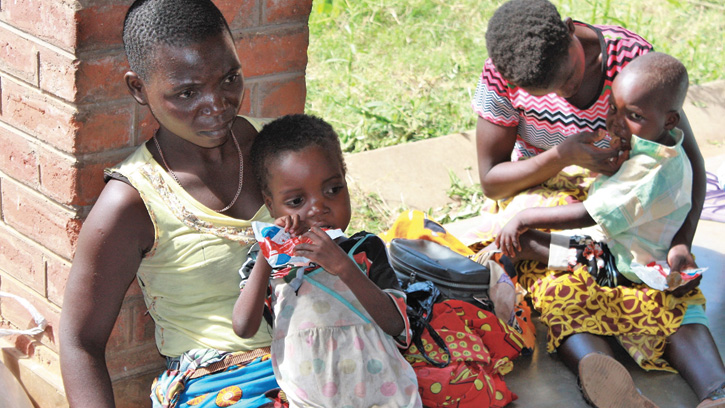Cost-Reduced Therapeutic Food Can Feed More Kids
Food Security | INNOVATIONS
Irish charity Valid Nutrition is driving down the cost of ready-to-use therapeutic food (RUTF) with a formulation based on locally grown soy, maize, and sorghum. The key to its effectiveness in treating malnourished children as well as the standard peanut- and milk-based RUTF: amino acid fortification. The lower cost and improved ingredient availability of this new RUTF opens the door to reaching more children in need.
UNICEF relies on RUTF to treat children with severe acute malnutrition, also known as wasting disease (UNICEF USA 2022). An estimated 13.6 million children under the age of five suffer from severe wasting, with the highest rates found in Asia and Africa (WHO 2021).
The go-to treatment for severe acute malnutrition is RUTF, often referred to as a miracle food. This specially formulated, ready-to-eat paste is highly effective in restoring health and supporting catch-up growth in severely malnourished children.
High in calories and nutrients, RUTF comes in shelf-stable, single-serve pouches and is typically made from peanut butter, milk powder, vegetable oil, sugar, vitamins, and minerals. The course of treatment for a child with severe acute malnutrition is three packets of RUTF a day for six to eight weeks.
Only about 15% of children with severe acute malnutrition receive RUTF, however, making expanding access a priority (Valid Nutrition 2021). One solution is through community-based management of acute malnutrition, a model developed by medical doctor Steve Collins that moves the treatment from the clinical setting to the home. Although the community-based approach removes some barriers to treatment, the model is still constrained by the cost of RUTF.
To tackle this problem, Dr. Collins founded Valid Nutrition in 2007. Valid Nutrition first looked at removing the milk powder, which accounts for nearly half the cost of the standard RUTF and 25%–30% of the formula (Bahwere et al. 2016). A milk-free RUTF would also be valuable to address the lactose intolerance common in many African and Asian countries.
Soy, maize, and sorghum were chosen as the base ingredients for the milk-free RUTF. Since these could be sourced locally, developing countries would be able to more easily produce their own RUTF, providing a sustainable solution that also helps the local economy by creating markets and generating income.
Unfortunately, early clinical studies indicated the milk-free soy-maize-sorghum RUTF was not as effective as the standard RUTF (Irena et al. 2016, Bahwere et al. 2016). This underscores why the United Nations currently requires that any RUTF used in its programs gets at least half its protein from milk—an ingredient known for its high protein quality.
For the next round of product development, Valid Nutrition turned to Japanese ingredient company Ajinomoto for help in boosting the protein quality. Together, they developed a milk-free soy-maize-sorghum RUTF fortified with amino acids.
The next clinical study was a success, showing that a milk-free RUTF, when properly formulated, can be used to treat severe acute malnutrition in children through age five and meet international minimum standards for recovery rates (Bahwere et al. 2017).
As Valid Nutrition lays the groundwork for expanded options in RUTF formulations to feed more children, we are reminded of the power of using food science for relief and development.
What Is FSRD?
IFT’s volunteer-led Food Science for Relief and Development (FSRD) Program under the International Division uses outreach, collaboration, and case studies to encourage the incorporation of food science and technology into food security initiatives. Learn more at info.ift.org/en/fsrd-21.


